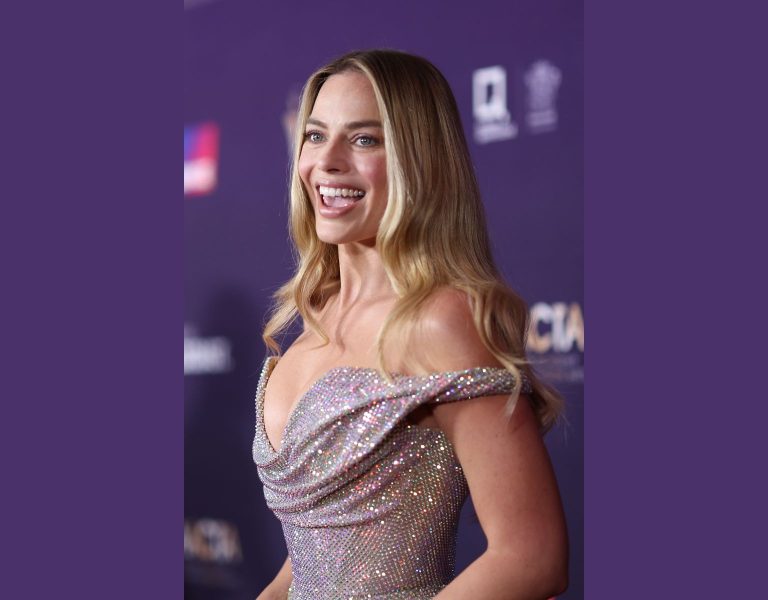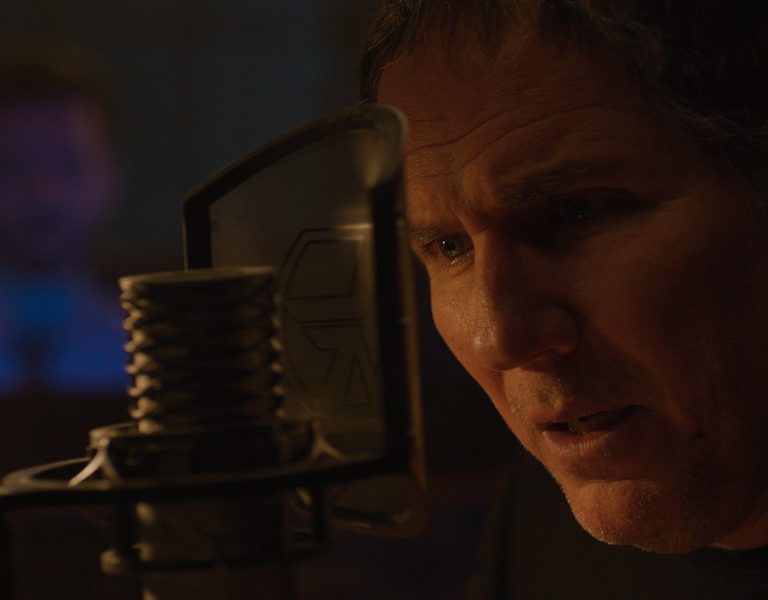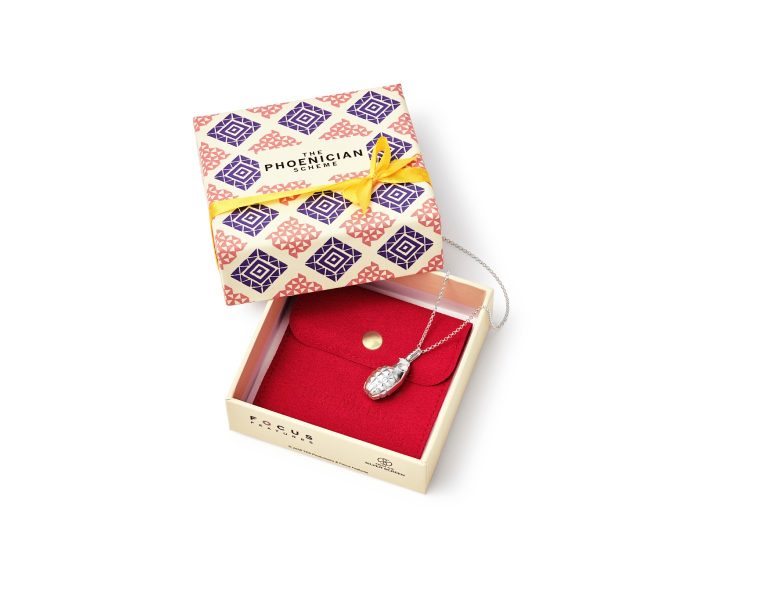Penelope follows a 16-year-old girl who, feeling out of place, leaves her family to trek into the wilds of Washington State. This poignant coming-of-age story intertwines survivalism and self-discovery. Editor Celia Beasley discusses her work on the film.
How did you approach editing Penelope to maintain the show’s quiet, contemplative tone while still keeping viewers engaged and which editing techniques and tools did you use to reflect Penelope’s inner transformation and create an intimate atmosphere?
The series brings us deeply into Penelope’s experience. As a viewer, we are with her all the time—watching her, or seeing what she is seeing, like a mouse on her shoulder. At times we actually go inside of her head to live her experience without any separation—almost like an alternate consciousness, where thoughts are nonverbal, atemporal and asynchronous. Some of these moments were shot with a particular treatment, and some were not, so it was an exciting challenge to figure out how to transition the viewer from being alongside Penelope to truly stepping inside her head and living her experience with her. Many important scenes were shot in high speed, so it gave me a lot of flexibility in the edit to use time remapping to explore the transition between the various levels of Penelope’s consciousness. I also used score, sound design, smash cuts and jump cuts, asynchronous dialogue, to move us through time and settle us into Penelope’s sometimes harsh reality. Mel gave me a huge amount of creative freedom to play in the sandbox with these scenes, which allowed me to go way out on a limb and try some really crazy stuff! Some of it worked and a lot of it didn’t, but it all helped generate ideas and speaks to how much trust Mel gave me as a collaborator, which is so essential to the creative process.
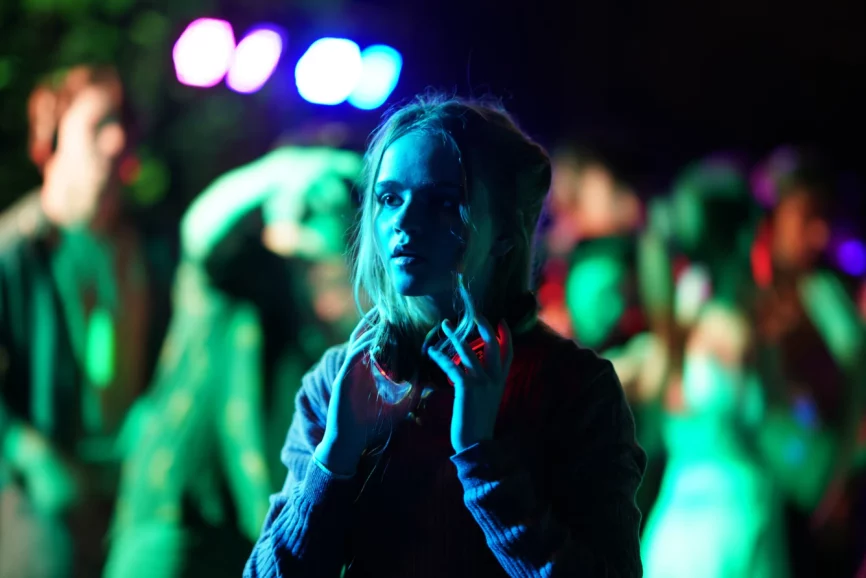
How did you incorporate the natural environment into the pacing and rhythm of the episodes?
Nature is its own character in Penelope, and as viewers, we are invited to experience it the way Penelope does – at times overwhelmed by its majesty, other times focused on the most intimate details. In episode 2 she has an almost trance-like experience as she goes deeper into the wilderness, and the cinematography and the edit reflect that wondrous state. Later, as she forages for food, her attention is honed to focus on the tiniest detail – picking the wrong berry can mean life or death! The cinematography and the edit were very intentional in mimicking Penelope’s perspective by inviting us to look at nature the way she is seeing it – creating a window for beautiful details, like a caterpillar crawling up a stalk of grass, or a leaf spinning in the sunshine, suspended by a spider web. That respect and reverence of the wilderness was very intentional in the production as well, shooting almost exclusively with natural light, hand held cameras and minimal gear, in order to minimize the impact on the environment.
How did you handle editing scenes with the more ‘fantastical’ elements, like Penelope’s encounters with wildlife or peculiar characters – did any scenes require a unique editing approach to preserve authenticity?
Editing the scenes with Cinder the bear was a unique challenge! I’d never edited anything where an animal was an actual character, and it was real team effort. Production had the cameras roll continuously on Cinder to gather as much footage as possible. Then my AEs combed through the footage and flagged everything the bear was doing – Cinder turning her head, Cinder looking up, Cinder doing something cute – and then I pulled out all my tricks from my reality tv days to craft the reactions we wanted. Megan is an incredible actor and I got to see a wonderful example of her flexibility during the fishing scene. In the script, the bear cub is timid and easily frightened, and Penelope is constantly reassuring it. But in real life, Cinder was anything but – she was sassy, unafraid and even a little entitled! I watched in the raw footage as Megan adjusted her performance to play off her fellow ‘actor’, even spontaneously changing lines to match Cinder’s ‘performance’. In the edit we were constantly auditioning different shots of Cinder to build the bear’s arc and establish a bond with Penelope. It was tough, but I’m really happy with how that episode turned out.
The show touches on a generational conversation about technology and nature. How did you use editing to support this theme without being heavy-handed and what visual or pacing decisions helped emphasise the contrast between Penelope’s life in nature and her past life in a tech-driven world?
Our entire society suffers from an obsession with technology – it’s certainly not limited to teenagers. It upsets us to see teenagers so wired to technology because it reflects back to us how we use it ourselves. Technology is training us to become dependent on it, all in the name of efficiency, convenience, and comfort. Penelope is manifesting a desire many of us share – to untangle ourselves from that dependency and connect to something deeper, something tangible and real, something that really matters. Penelope challenges herself in the most fundamental way – she has to rely on her capacity to learn in order to survive. And learning is very inefficient. It is slow, it is clumsy, it is deeply uncomfortable – all the things that technology ‘helps’ us avoid by doing it for us. Mark and Mel really wanted the show to immerse us into Penelope’s experience – exploring, discovering, struggling – and keeping a slow, real-time pacing was key to that. But we couldn’t actually show everything in real time, so the challenge was to give the feeling of real time without actually having everything play out. In the fire-building scene, for example, it’s crucial for the audience to experience the laboriousness of the process, because the stakes are so high – if she doesn’t successfully build a fire, she could die. Megan Stott actually did all the steps required to build a fire – gathering rocks, building a fire pit, collecting wood, breaking kindling, building a teepee, lighting the tinder – and they were all shot in real time. With Adobe Premiere Productions, I used jump cuts to move us through those steps, but then brought us back to real time when she is actually trying to light the fire – knocking over the sticks, blowing out the meagre flame, trying, failing, trying and failing, over and over again. When she finally gets it, we feel what an accomplishment it is, because we lived through her struggle to get there. This is exactly what technology doesn’t allow us to do! Watching Penelope learn in real time is a challenge for us as an audience too, as it is so vastly different from what we are used to seeing on screen. I love how intentional that pacing was since the very inception of the show, and how experiencing Penelope’s discomfort pushes us to be a little more comfortable with our own.
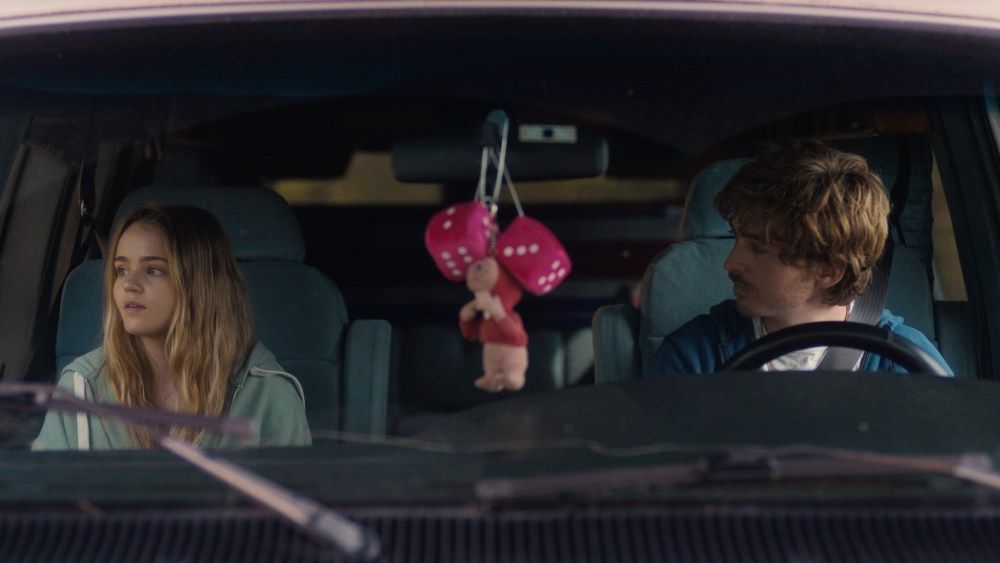
How did you collaborate with the directors and cinematographers to ensure the editing stayed true to the vision of the show’s rhythm and tone?
I’ve worked with Mel Eslyn (director) and Nate Miller (DP) for many, many years. Many projects I’ve edited over the years have been shot by Nate, or produced by Mel, or both! That deep familiarity really served us in Penelope as a kind of shorthand. The first time Mel told me about the show, I was immediately able to imagine it in my head because I know her sensibility so well. Nate is an outstanding cinematographer because he instinctively knows what’s essential in a scene, AND he makes beautiful shots. But beauty is not always the priority – sometimes shots that are too glorious can actually distract from the story. Nate’s cinematography is beautiful but it doesn’t compete with the performance. He creates a window, and then disappears, and that’s what allows us to fully be immersed in the world of the film.
What was your process for aligning Mark Duplass and Mel Eslyn’s creative direction with your editorial choices?
Mel and I have known each other for nearly 15 years, coming up through the same tightly knit Seattle indie film community. She has produced many of the projects I have edited over the years (Outside In, I’ll Show You Mine) and is one of the trusted voices I call upon when I need feedback on a project (and vice-versa). Even though we had never worked together as director/editor, I felt confident in my understanding of her sensibilities from our shared experiences together. I always like to have a creative download with the director before the shoot begins – it’s an opportunity for me to try to get inside their brain as much as possible. During this call I will ask about pacing, tone, character motivation, any plot points that are confusing, music, etc. I know as soon as the shoot gets going, their full attention will be on set, so I want to get their vision as clear as possible before I start my edit. And understanding their vision doesn’t mean having the edit pre-baked in my mind – it more means that I deeply understand the heart of the project, so that when I am at a decision point (which we constantly are in editing!), I can evoke the vision and make an educated guess about which way to go. I also like asking for reference films or shows or even stories – for Penelope, Mel referenced Lynne Ramsay’s Morvern Cellar, and you can definitely see the influence of that film in many scenes.
Can you describe a specific scene or sequence where the editing brought a key emotional moment to life?
Episode two starts out with Penelope trying to put together a tent – something we have all struggled with at some point if we’ve ever gone camping. For that scene I used jump cuts to move us through time while still keeping us firmly anchored in her frustration with the seemingly never-ending struggle to put that tent together. Then she hears a crack and whips around, and at that moment I jerk the edit back into real time, forcing the audience to sit with her in that excruciating silence as her heart hammers away and the realisation of her vulnerability rushes in. I used that alternating pacing a lot throughout the series to mimic Penelope’s focus, whether it was fully concentrated on a task in front of her, or confronted with brutal reality, or marvelling at the beauty around her.
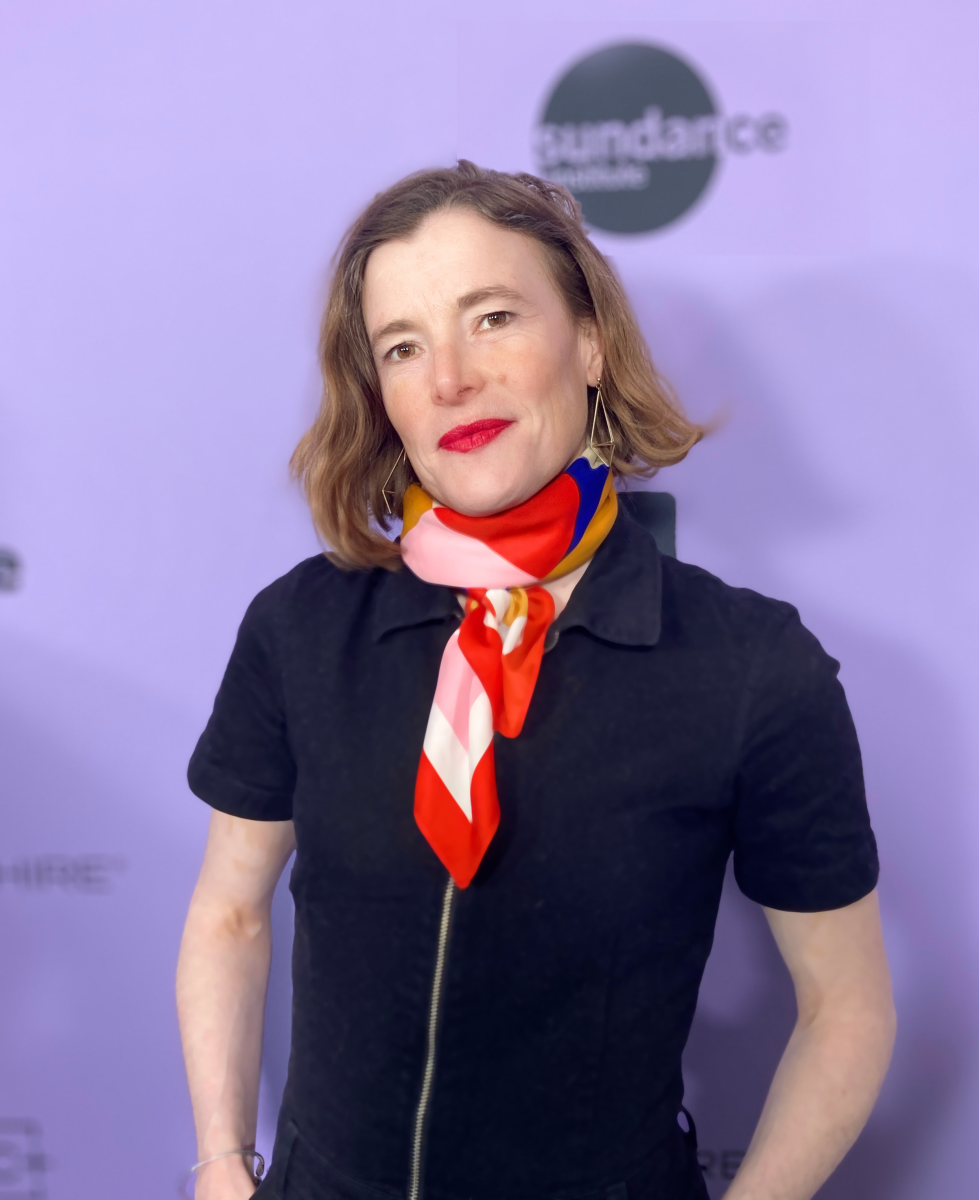
How did the editing elevate the emotion of a pivotal turning point in the story?
The scene of Penelope on the train is a crucial one – it is the first time she is truly reflecting on her actions and their consequences, and consciously committing to her journey. True to our indie roots, it was shot on an actual working train with just a couple handheld cameras operated by our DP Nate Miller and B camera June Zandona. The changing light and landscape would have made it impossible to cut the scene linearly, and we embraced the beautiful ethereal nature of the footage and built the scene to be atemporal and asynchronous, hearing Penelope’s voice both out loud and as words in her head. The real world was further tied with Penelope’s emotional state with Danny Bensi and Saunder Jurriaans’s melancholy score, with Julia Piker’s ethereal vocals echoing the train’s horn. The entire show is seen through Penelope’s eyes, so throughout the show we intentionally blurred the lines between ‘reality’ and her perception.
What was the most rewarding aspect of editing Penelope?
I am so grateful to Mel and Mark for having trusted me to build this first season. More than any other project, this show made me stretch my capacities, challenging me to explore new editing vocabularies and find new creative solutions. Mel trusted that I could do it, and gave me the space and time to develop those ideas. That combination is precious and I have become more skilled not just as an editor but as a storyteller because of it. I am also very proud to have participated in bringing to life Mel and Mark’s unique vision. This show does exactly what it set out to do – immerse us into the experience of a girl finding herself in the wilderness, both literally and figuratively. It asks us to slow down. It is unlike anything else on tv, it does not fit into a box. This is a show that assumes that audiences can handle – dare I say – appreciate – something they’ve never seen before. At a time when algorithms are choosing our experiences for us, this show takes us back to the profoundly human characteristics of exploring, discovering and adapting. That vision was clear from the beginning and despite the inevitable trials and tribulations of filmmaking, that vision can now be shared with the world. It is a very delicate balance to preserve your vision while also releasing control to your collaborators so that they too can help bring it to life, and I am so thrilled to have been part of doing that.
Is there a moment or episode where your editorial choices made a lasting impact on the show?
In the pilot episode, Penelope wanders into a supermarket somewhat aimlessly, before becoming suddenly drawn to the camping gear. I used time remapping, sound design and score to bring us into her dream-like state as she starts gathering items and slowly forming a plan in her head. Then I used a smash cut and the jarring ‘beep’ of the scanner at the register to wrench us back to reality and Penelope’s realisation that she’s going to have to find a way to pay for all this. That is a moment where I’m making the edit visible, almost like I’m winking at the audience from behind the curtain. I’ve gotten to watch that scene in a theater during film festivals, and I love hearing the audience laugh at my little ‘joke’!
Produced by Duplass Brothers Productions and created by Mark Duplass and Mel Eslyn, the pilot premiered at the 2024 Sundance Film Festival, with the eight-episode series streaming on Netflix in the US starting September 24.


